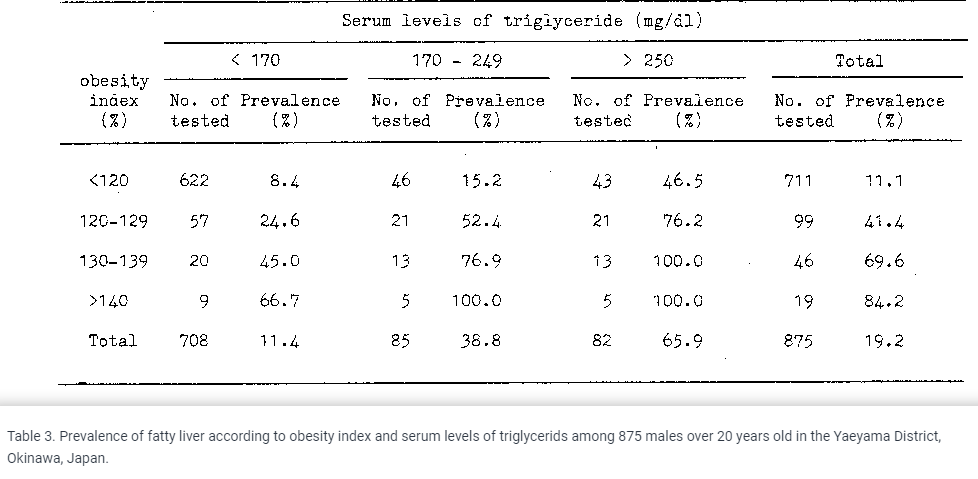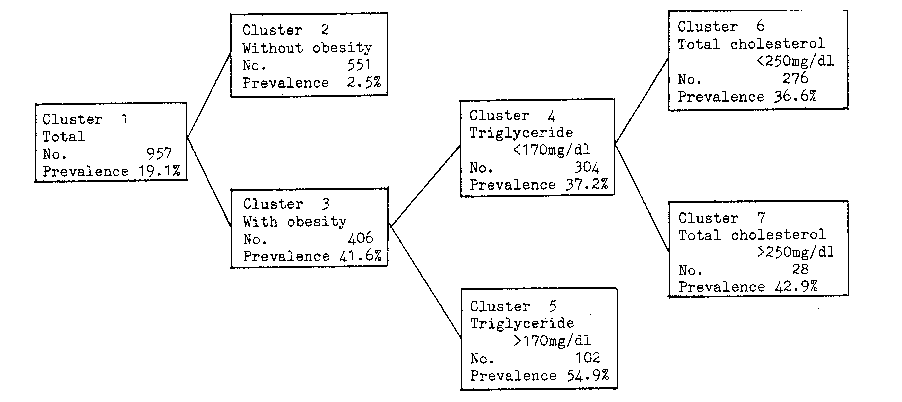Peat diet and the risk of Vitamin A toxicity, fatty liver
-
Let's have an open-minded discussion around this topic. We can definitely agree that there are potential risks with supplemental Vitamin A, excessive liver consumption. VA can also be anti-thyroid, as Peat himself has admitted,
What has your experience been?
And if anyone doesn't want to debate and will claim there is no risk, please refrain from participating.This is a list of factors that can cause low tolerance of VA:
- blue light toxicity
- lack of sunlight
- low metabolism
- low bile output
- lack of soluble fiber
-
-
@zeal said in Peat diet and the risk of Vitamin A toxicity, fatty liver:
@GreekDemiGod Youtube Video – [43:56..]
just don't be unhealthy
Thanks for sharing that.
-
I prefer to not eat liver and I do not take any Vitamin A supplements, but in general I think the risk of hypervitaminosis A from a Peat inspired diet is WAY over stated.
-
@GreekDemiGod low vitamin D too. In Sweden or Norwegen they saw that people who drank whole milk daily sometimes had lower bone density and attributed it to the milk protein acidifying their bodies and dissolving their bones. But then they noticed that only the vitamin D deficient people had those issues and came to the conclusion that it was the vitamin A in whole milk not being balanced with enough vitamin D that was messing with bone homeostasis. Zinc is also necessary to make vitamin A usable by converting it into retinoic acid. Most zinc deficiency symptoms (low steroids, low immunity, poor growth,..) actually come from the fact that you can't use vitamin A properly
-
@GreekDemiGod said in Peat diet and the risk of Vitamin A toxicity, fatty liver:
Let's have an open-minded discussion around this topic. We can definitely agree that there are potential risks with supplemental Vitamin A, excessive liver consumption. VA can also be anti-thyroid, as Peat himself has admitted,
What has your experience been?
And if anyone doesn't want to debate and will claim there is no risk, please refrain from participating.This is a list of factors that can cause low tolerance of VA:
- blue light toxicity
- lack of sunlight
- low metabolism
- low bile output
- lack of soluble fiber
Obvious things. When there is a caloric surplus, you are simply more likely to develop obesity and fatty liver disease. Consuming large amounts of juices and sugar may contribute to this, because they do not provide a feeling of satiety. However, sugar itself cannot be blamed, only its inappropriate and irresponsible use.
I eat 50g of liver every day and so far I'm fine. I don't think Peat ever talked about eating a lot of it.
Preventing fatty liver on Peating may include high doses of taurine, choline and l-carnitine. Glycine and caffeine may also help.
-
@Fructose said in Peat diet and the risk of Vitamin A toxicity, fatty liver:
@GreekDemiGod said in Peat diet and the risk of Vitamin A toxicity, fatty liver:
Let's have an open-minded discussion around this topic. We can definitely agree that there are potential risks with supplemental Vitamin A, excessive liver consumption. VA can also be anti-thyroid, as Peat himself has admitted,
What has your experience been?
And if anyone doesn't want to debate and will claim there is no risk, please refrain from participating.This is a list of factors that can cause low tolerance of VA:
- blue light toxicity
- lack of sunlight
- low metabolism
- low bile output
- lack of soluble fiber
Obvious things. When there is a caloric surplus, you are simply more likely to develop obesity and fatty liver disease. Consuming large amounts of juices and sugar may contribute to this, because they do not provide a feeling of satiety. However, sugar itself cannot be blamed, only its inappropriate and irresponsible use.
I eat 50g of liver every day and so far I'm fine. I don't think Peat ever talked about eating a lot of it.
Preventing fatty liver on Peating may include high doses of taurine, choline and l-carnitine. Glycine and caffeine may also help.
It seems to me that fructose itself has little function in fatty liver disease.
Indeed, if consumed in a 100% molecularly isolated form, without an adequate supply of healthy amino acids in the diet, glycogen storage may be impaired due to nutrient deficiencies, resulting in the accumulation of fat tissue.
-
@Fructose said in Peat diet and the risk of Vitamin A toxicity, fatty liver:
I eat 50g of liver every day and so far I'm fine.
Glad that you're fine. 50g daily is still a lot. It's 350g per week.
-
@GreekDemiGod said in Peat diet and the risk of Vitamin A toxicity, fatty liver:
@Fructose said in Peat diet and the risk of Vitamin A toxicity, fatty liver:
I eat 50g of liver every day and so far I'm fine.
Glad that you're fine. 50g daily is still a lot. It's 350g per week.
It's a temporary treatment. I suffered from visual disturbances and typical symptoms of vitamin A deficiency.
-
Many things become toxic if you're hypothyroid.
-
It's good to understand that things like vitamin A do not exist in isolation AND that their actions/effects depend on the context.
Therefore, no one can say that a vitamin is absolutely bad or good...
BTW Never mistake correlation with causation guys...
More about it https://bioenergetic.forum/topic/39/ray-approach-as-real-science/3?_=1706619254334
-
@GreekDemiGod honestly i think there's been a whole lot of open-minded discussion on the matter already. In that other place it was one of the biggest threads. Quoting Peat as saying it can be toxic is misleading in the least, as he advocated eating liver frequently. This matter of Vitamin A, and D, toxicity is mainly an outgroup signal for people to differentiate themselves from 'Orthodox Peaters'. Vitamin A is required for thyroid synthesis. The toxicity occurs in huge doses, and most people severely lack it. just through an analysis of historical diets we know this has to be the case, not even bringing in the factors that lower it It's very silly to have this issue come up everywhere again and again, as if anyone's eating polar bear livers of huge amounts of beef liver a day. If anything I struggle to eat it a lot, and when I do I instantly feel a lot its benefits. Supplementing a synthetic version of it is a different matter, but again that is not the same as your stance where it seems like you don't advocate having any amount of it even from diet.
This is not a call to shut down discussions on the topic, but it would be smart if we think about the presentation of issues like this. Most people here I don't think 'need to have a conversation about Vitamin A toxicity' as much as they 'need to have a conversation about PUFA benefits'. I think/hope we all know nothing exists in isolation, and that some nutrients are quite complex in terms of their relation with hormones and other nutrients.
-
@CO3 I think I agree. Many studies, even with bizarrely high doses used chronically in case of DEFICIENCY, did not result in vitamin A toxicity. Moderation and monitoring your body are key.
Vitamin A is not toxic from a biochemical level. The dose makes the poison.
https://pubmed.ncbi.nlm.nih.gov/6453848/
This study, for example, shows that the use of 300,000 IU only caused xerosis and cheilitis in people with acne.
-
@GreekDemiGod i hardly take this polemic seriously because most of the time, the guys yapping about vitamin a are borderline deficient in vitamin d, that OP who made the infamous genereux thread on rpf is a good example.
-
BTW Interesting reading https://justtakeabite.com/2020/01/06/why-we-stopped-vitamin-a-detox-diet/
-
I just sincerely doubt western problems are caused by sweet potatoes or too much (nasty) beef liver consumption. Yeah, I know eating a polar bear liver is toxic, this is basically their only historical event they use, but how does this relate to anything? Nobody eats bear livers. People don't need to disprove a made-up claim by a personal trainer; that person has to demonstrate that it's a legitimate theory first. He can't do that because it's nonsense.
A diet of muscle meat, dairy, microwave pizzas, and fried chicken is low in vitamin A. The standard American diet is low in vitamin A. Blaming health problems on it makes zero sense. Evidence points to the opposite. Ray's position on beta-carotene was also just "it's bad if you don't have enough B12." It's just people dramatizing it.
Carotenemia is not "toxic" either. Anyone claiming that is 100% a grifter trying to scare people. Create problem, sell solution.
-
@CO3 Thank you.
-
@Fructose said in Peat diet and the risk of Vitamin A toxicity, fatty liver:
300,000 IU
Have you realized how much is 300,000 IU of Vit A? of couse it may be toxic at those levels. They got what they wanted which is to scare people's off by the use of Vitamin A. Do your research or ask for help but don't come in here creating debates with no information. (nothing personal towards you).
-
@toiletking how much vitamin D is needed to offset any theoretical negative effects from the vitamin A in, say, 4oz of liver (5000 IU)?
-
Just to remind that Okinawa is a place well known for the number of centenarians and they used to eat a low-fat diet but with 800g/day of sweet potato, at least in the past. What's that, like 250.000 IU beta-carotene? Which is many times more than the carrot that a certain detective is upset about.


If you're not eating liver every day and you're healthy, I highly doubt that retinol is a problem, or that eating 1 carrot will poison you with beta-carotene haha